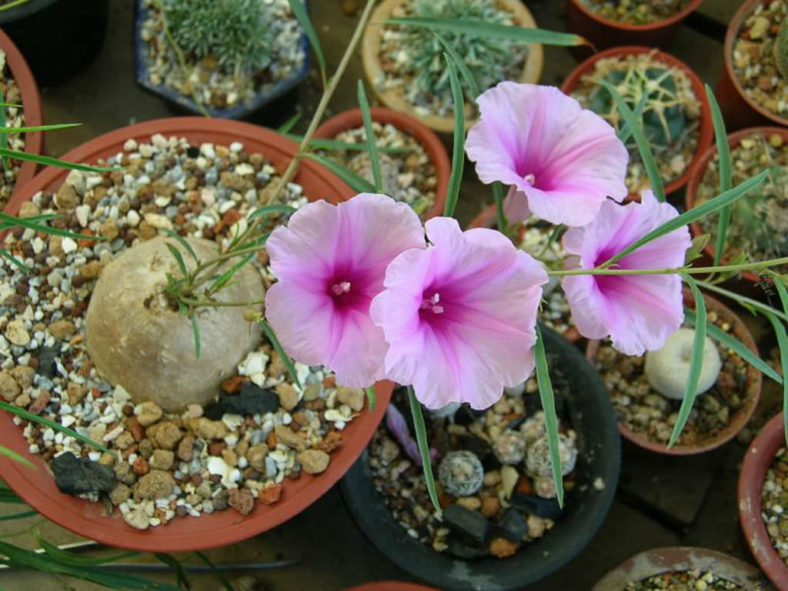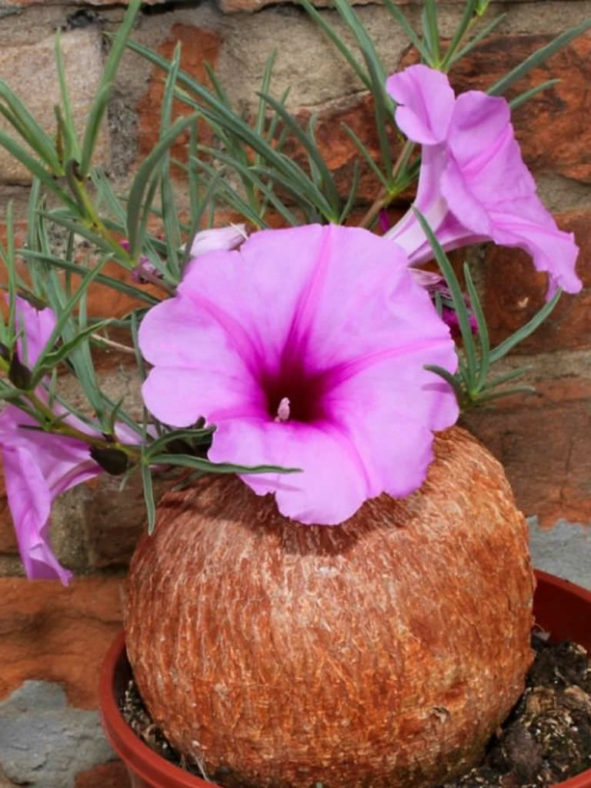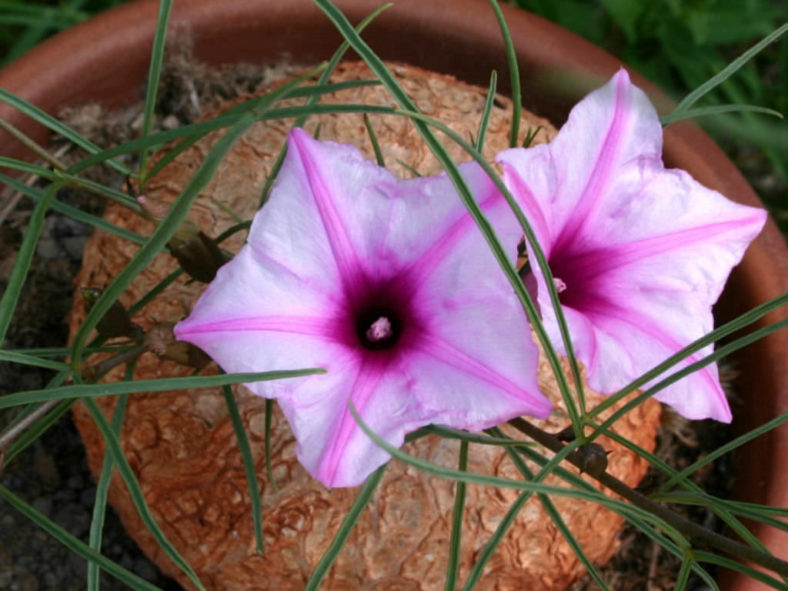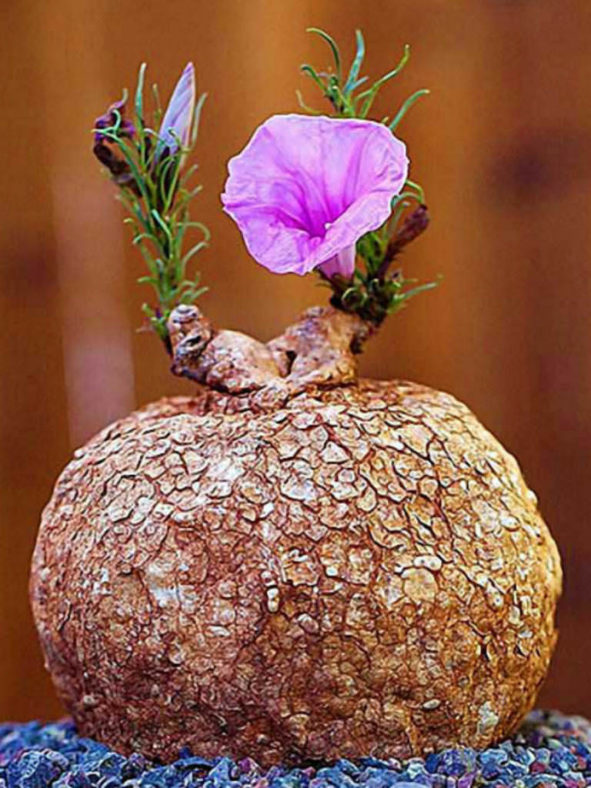Scientific Name
Ipomoea bolusiana Schinz
Synonym(s)
Ipomoea angustisecta, Ipomoea mesenterioides, Ipomoea praetermissa, Ipomoea rubro-viridis, Ipomoea simplex
Scientific Classification
Family: Convolvulaceae
Tribe: Ipomoeeae
Genus: Ipomoea
Etymology
The specific epithet "bolusiana" (pronounced "bol-oo-see-AY-nuh") honors Harry Bolus (1834-1911), a South African botanist, botanical artist, businessman, and philanthropist.
Origin
Ipomoea bolusiana is native to Madagascar and South Africa.
Description
Ipomoea bolusiana is a small caudiciform plant with a thick, tuberous rootstock and one or several erect or prostrate stems with green, widely spaced leaves. The caudex can reach a diameter of 8 inches (20 cm). The stems are slender, hairless, and woody at the base, growing up to 10 feet (3 m) long. The narrow leaves can measure up to 2.8 inches (7 cm) in length.
The flowers are mauve or magenta-pink, with darker centers. They are funnel-shaped, appear near the base of the stem from spring to fall, and can reach a length of up to 2.8 inches (7 cm).

How to Grow and Care for Ipomoea bolusiana
Hardiness: USDA hardiness zones 10b to 11b: from 35°F (1.7°C) to 45°F (7.2°C).
Most species have spectacular, colorful flowers and are often grown as ornamentals, with many cultivars having been developed. Ipomoeas need full sun and moderately fertile, well-drained soil in the garden. Provide shelter from the wind. Prune climbing species in spring. Under glass, provide full light with protection from the hottest sun. Water the plant freely and fertilize monthly during the growing season, but water sparingly in winter. Climbers and trailing species need support.
Chip seeds with a knife, scrape them with sandpaper, or soak them in water for 24 hours before sowing at 64°F (18°C) in the spring. Root softwood cuttings of perennials or shrubs in spring or summer, or take semi-ripe cuttings in summer.
White blister, rust, fungal leaf spots, stem rot, thread blight, charcoal rot, and wilt can occur.
Learn more at How to Grow and Care for Ipomoea.
Links
- Back to genus Ipomoea
- Succupedia: Browse succulents by Scientific Name, Common Name, Genus, Family, USDA Hardiness Zone, Origin, or cacti by Genus
Photo Gallery
Click on a photo to see a larger version.


